About this detail of the Tiger
This is a finely detailed kit that unfortunately contains no optional parts to allow for the many changes made to the Early Tiger's design at different times. Therefore it accurately represents only those Tigers built in a short period from January to February 1943.
The kit includes 5 decal options. This article addresses the question of how accurate is the kit for its own decals.
Option A: Tiger "S33", 2 SS-Pz.Div., Autumn 1943 :
This unit had at least two Tigers numbered 'S33', and the kit's decals are for the earlier one, which makes the quoted date of Autumn 1943 incorrect. The kit is close to accurate for this Tiger; unfortunately it has the wrong kind of mantlet. Also, the smoke launcher devices were cut off the turrets of these tanks around May 1943, leaving a tab on the roof. This modification is easy to make on the model.
However, the kit's turret bin is completely wrong. All of the first Tigers issued to Das Reich had, without exception, a wide turret bin with bolted supports on its sides. The Tiger's standard bin, as provided in the kit, had not been invented yet.
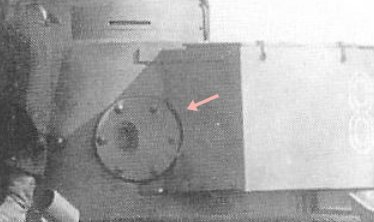
Since the wide bin collided with the pistol port and the new escape hatch, Das Reich's workshop cut out half-moon bites on each side of the bins, creating a very distinct look that was unique to this unit. This photo shows Tiger S33 itself, in the spring of 1943; we can see the cut-out at this side of the turret bin.
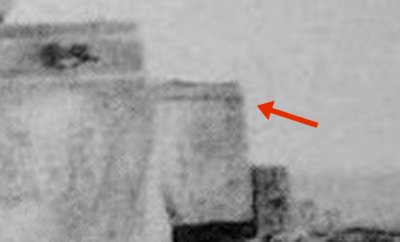
This is Tiger S33 at the time of the Kursk operation. We can see the shadow of the bin's side support, proving that it's the wide bin.
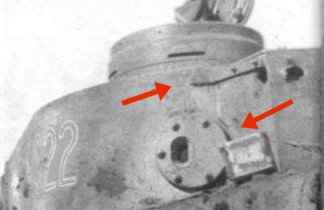
If any more evidence were needed, here's a photo of the same Tiger from the autumn of 1943. It has been renumbered as "S22" but it still carries the "wide" bin. The camouflage paint patterns, and damage to the vehicle, are used to match up photos from different periods.
Option B: Tiger "143", s.Pz.Abt. 505, July 1943 :
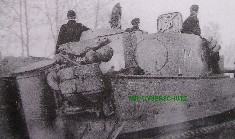
This unit was issued some Tigers that match the kit. Number 143 is very probably one of them. However, the kit includes only the flat version of the mantlet, and 143 probably carried the other type, with reinforcement at the gunsight holes.
Option C: Tiger "122", s.Pz.Abt. 503, July 1943 :
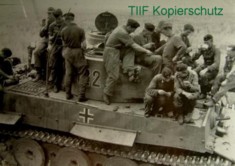
This unit was issued some Tigers that match the kit. Number 122 may be one of them; all of the visible details in the available photos are correct. However, the kit includes only the flat version of the mantlet, and 122 probably carried the other type, with reinforcement at the gunsight holes.
Option D: Tiger "724", 10th Pz.Div., Tunisia :
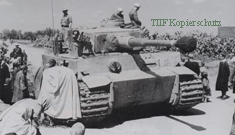
This Tiger was originally numbered "112" and served with s.Pz.Abt.501. Many photographs of it exist, and we can see that it's a very poor match to the kit. The mudguards and fenders, the shape of the hull at the front towing shackles, the exhaust shields and other details are all different.
Option E: Tiger "I", s.Pz.Abt. 503 :
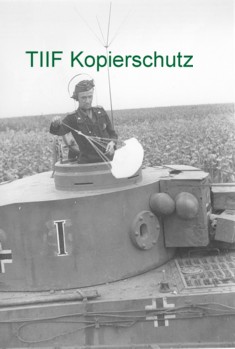
This unit had at least 2 Tigers designated with the Roman numeral 'I'. One of them was built in December 1942 and its features don't match the kit. The other one, known only from this photo, may possibly be a match; we can't see enough of it to say so. It is marked with crosses on the turret bin, which the kit does not provide.
Unfortunately, a major feature of this Tiger has been overlooked. It is a commander's vehicle with additional radio equipment, which implies three antennas and other externally visible changes. These are not provided in the kit.
In conclusion; this kit can be accurate for only two of the decals included in it, and those are in question. But it's worth noting that the kit must be a very accurate representation of some Tigers issued to s.Pz.Abt. 503, 504 and 505, if decals for them can be obtained. For example, the Tiger preserved at Bovington Museum is a perfect match if you omit the kit's S-mine launcher tubes.
[1] DW to Tiger 1